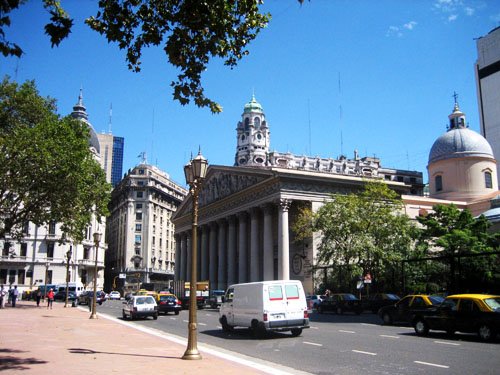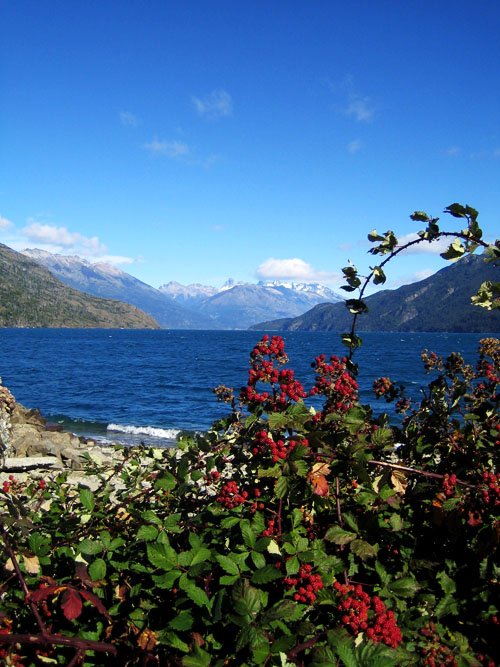In this section, Know You World, bloggers from different parts of the world discuss the culture and uniqueness of their own countries.
This week, I am featuring the unique and magnificent country of Argentina. Ana from A pinch of this, a dash of that did not hesitate to answer all my questions.
Read ahead and learn new things about this superlative country.
1. From what part of the country are you? Describe briefly your hometown. Where are you currently living?
I grew up in Ramos Mejia, a suburb in Greater Buenos Aires, 30 minutes from the city of Buenos Aires.
Ramos Mejia is a typical suburb in that it grew around the train station in the early 1900s. There are the requisite plaza and Catholic church (circa 1904 and where I got married) across from the railway station. My school is located next to the church. There are apartment buildings in the center and really quiet residential areas farther away.
I’m currently living in Dallas, US, and it couldn’t be a more different place. I miss my barrio so much!
2. Design a one-day itinerary for somebody visiting your hometown.
There’s not a lot to see in Ramos Mejia, just locals going about their business. But if you’re going to visit, you might as well go to the city of Buenos Aires.
Start the day with a traditional breakfast of café con leche y medialunas (café au lait and croissants) at historic Café Tortoni. Bear in mind that our croissants are smaller, sweeter, and denser than the French ones. Then, walk down Avenida de Mayo towards the river and look at the Spanish architecture.
Once at Plaza de Mayo, take a minute to observe the plaza where the Mothers of the Disappeared have walked every week, where the crowds cheered Peron and Evita, where people manifest their disagreement or support of the government.
Hopefully, you will catch the changing of the guard. Visit the historic Cabildo, where the country’s emancipation from Spain was signed in 1810(not independence, which came late) and the Cathedral, where our top Independence hero, Jose de San Martin, is buried.
Head south along Balcarce Street towards San Telmo, the oldest neighborhood. Soak in the bohemian, tango-laden atmosphere at Plaza Dorrego. Go down to Paseo Colón Avenue and, without crossing the street, take the 152 or 64 bus to La Boca.
Admire the colorful dwellings called conventillos where Genoese immigrants lived in the past, have a look at the Fundación Proa museum, they always have something interesting going.
Take the 152 or 64 bus in the opposite direction in which you came and alight in the Facultad de Ingeniería stop or any other stop after that. Walk towards the river (to your right) and you’ll get to Puerto Madero, the recycled redbrick docks. Walk up and down and take photos to your heart’s content. Maybe even visit Fragata Sarmiento, a historic frigate that is now a museum.
Choose one of the many restaurants in Puerto Madero for dinner. Your feet will appreciate the rest.
3. What parts of the country have you visited?
We used to go to the beach every year for our summer holidays. Mar del Plata was our favorite city. I’ve been to Mendoza (the wine country,) Rosario (the beautiful second largest city in the country,) La Rioja in the mountains, Ushuaia (the southernmost city in the world,) Iguazu Falls (truly magnificent,) Entre Rios (the Palm Tree National Park in Colon and the thermal springs in Villa Elisa,) San Luis (mountains again,) San Martin de Los Andes (Patagonia.)
4. Your country is known for tango, wine, beef, football (or soccer, depending on which side of the Atlantic you’re in,) skiing, Buenos Aires, Patagonia.
5. What type of food is typical of Argentina? Are any special dishes prepared for a specific season or festivity?
There are a few dishes that you’ll find everywhere and some are more local. The empanada is an example of the former. Since Argentina produces so much beef, I guess asado (Argentinean-style barbeque is meat grilled on embers, not open flame, and no sauce, just salt).
Locro, carbonada, mazamorra, humita en chala are just a few traditional dishes. Pizza and pasta are extremely popular, as are milanesas (similar to schnitzel).
If you have a sweet tooth, have an alfajor, a kind of cookie sandwich filled with dulce de leche and covered in chocolate. Or buy a dozen facturas (sort of Danish pastries, but not quite) for tea.
6. How would you describe the family ties in your country?
Family is very important to us. Children tend to live at home until they get married, whether it’s at the age of 22 or 35. Families eat at least one daily meal together, generally dinner, and the extended family gets together for Sunday lunch every week. My grandmother used to make paella for all 20 of us.
7. What holidays are celebrated?
Many Catholic holidays are observed, like Christmas, Easter, and Immaculate Conception of the Virgin Mary. And then there are the national holidays like Independence Day (July 9), Emancipation Day (May 25), Labour Day (May 1), Flag Day (June 20), José de San Martin Memorial Day (August 17. He is our Independence hero), and a few more.
8. Any cultural practice/curiosity we should know about? We do not want to offend anybody if we visit.
Don’t put off (or grossed out) if strangers introduced themselves with a kiss. We’re a very touchy-feely lot!
9. What off the beaten path place or activity can you recommend?
Maybe go to a museum for coffee. By all means, have a look at the collections first! Some museums like the Museo de Artes Decorativas or Museo Evita, have lovely cafes.
10. Leaving aside cultural activities and sightseeing, where we can go to have pure fun?
At my age, fun equals shopping! Seriously, I would go to a bar such as Milion, Druid In, or Gran Bar Danzon. Or head to the Plaza Cortazar area in Palermo and take your pick.
11. The cheapest way to have a good time or learn something?
Admission to the Fine Arts Museum (Museo de Bellas Artes) is free.
The Bosques de Palermo, beautiful parks slap bang in the middle of the city, are a good place to work out, have a picnic, rollerblade, or just relax.
12. In your opinion, what is a good way to experience the true soul of the country (or have an authentic experience)?
Probably hanging out with locals.
Visit barrios that are outside the tourist circuit: Villa Devoto, Flores, Villa Urquiza, Belgrano, and see locals going about their business.
13. What makes your country and people unique?
A long time ago I heard a phrase (in Spanish) that made me stop and think. It translates roughly as “Mexicans descend from the Mayas and Aztecs; Argentineans, from ships.” My interpretation of it is that we are newcomers. Our culture has a strong European influence at the expense of the native aboriginal cultures that populated these pampas centuries ago.
Then there’s a joke that translates as “Porteños are Spaniards who speak Italian and think they’re French.” It’s a bit harsh -but kind of true- about most inhabitants of Buenos Aires. “Porteños” because they live near the port, “Spaniards” because Argentina used to be a Spanish colony, “who speak Italian” actually, Spanish is spoken with Italian intonation, “think they’re French” sadly, Buenos Aires has always taken Europe, and France in particular, as a cultural parameter, though it has changed radically in the last decades.
14. Anything else you want to add about your country?
Nothing else.
15. How we can learn more about you and your country?
You can visit my blog to learn more about me. I wrote a few posts about Buenos Aires and Argentina too.
Thanks, Ana for sharing Argentina with all of us!!!
All photos kindly provided by Ana.
Have you been to Argentina?







Alex says
Great post about Argentina. It is such an exciting country. One of the team members from my site is currently an expat living in Buenos Aires. Her posts about Argentina have convinced me to visit as soon as possible.